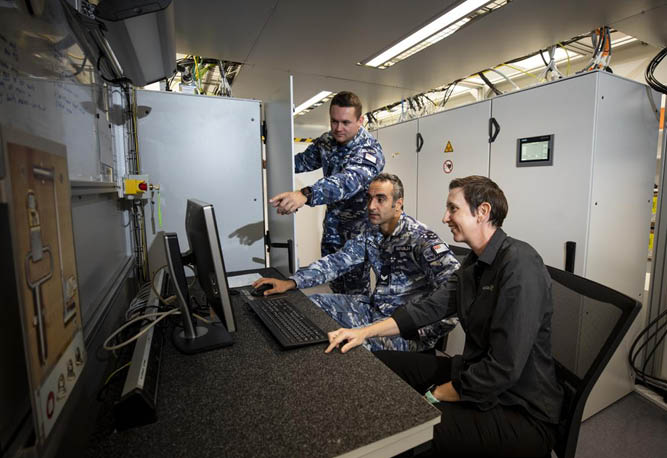The current highly successful and world-leading state of Australian Airpower and defence science harkens back to the creativity of the innovators, experimenters of the early 1900s, who worked feverishly to achieve heavier-than-air aircraft – an aim then being sought by innovators around the world.
In 1909, six years after the Wright Brothers’ flights in America, the Commonwealth Government offered a £5,000 prize for the first Australian ‘Flying Machine…suitable for Military purposes.’
There was one plane that may have fitted the bill, an aeroplane designed by electrical and motor engineer John Duigan and constructed with the help of his brother Reginald on their parent’s Victorian property.
However, Duigan missed the closing date for the competition because of a misunderstanding over a requirement term word for the unclear word ‘poising’, which he believed meant hovering or remaining stationery, an impossibility for any powered aircraft at the time. He found too late that the intended meaning was to be able to turn in a half mile circle.
The prize was never awarded and by then a number of planes were being imported into Australia.
Despite this, Duigan’s plane was described in one military history book as the first true flying machine. Duigan first flew his biplane on 16 July 1910 making it the first flight of an Australian aeroplane. Duigan continued his interest in aircraft and Defence.
During the latter part of World War 1, Duigan, then a captain in the Australian Flying Corps (AFC), served with No. 3 Squadron AFC in France where he received the Military Cross for his actions on 9 May 1918. Attacked by a German Flying Ace and despite being badly wounded along with his observer Lt Alec Paterson, Duigan managed to land his machine and save the photographic plates they had taken. During World War 2 he was employed in the quality control branch of the Royal Australian Air Force.
Originating from the AFC, the Royal Australian Air Force was established in 1921 as the second-oldest independent Air Force in the world and, since then has been involved in almost all air warfare theatres around the world.
In 2021, the RAAF celebrated its centenary and in 2022 Defence Science and Technology celebrates its 115th anniversary. Along with industry and academic assistance, the achievements of the RAAF and Defence Science and Technology could not have been realised independently of each other, and as a result there is a long and enduring relationship between the two.
Both RAAF and the Defence Science and Technology Group (DSTG) work together to resolve challenging issues that demand innovative solutions to maintain Australia’s security and air superiority, across a broad range of scenarios and situations, including those which are novel or unanticipated.
Today’s Air Power strategies cover an integrated systems approach which includes combat; transport and combat air support; intelligence, surveillance, and reconnaissance and electronic warfare; maritime control and response; and now space. These purpose-related functions represent some of the major roles that the Air Power system must be capable of supporting to achieve its purpose, independent of specific actors or events in the current complex and unstable geopolitical environment in which we live.
The ingenuity and strength of Australia’s Air Power has seen a number world-leading significant achievements, developed in association with DSTG, many of which have been adopted by our allies.
JORN
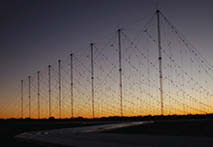
Australia is the world leader in high-frequency, skywave over-the-horizon radar (OTHR) technology, employed in the Jindalee Operational Radar Network (JORN).
JORN comprises three Over-The-Horizon Radar (OTHR) systems and is part of a layered surveillance network that provides coverage of Australia’s northern approaches.
JORN provides wide-area surveillance at ranges of 1,000 to 3,000 kilometres from the radar sites, and is used to monitor the air and sea approaches in support of Australia’s national surveillance effort.
Unlike traditional radars that were limited by the line of sight, the Jindalee high frequency OTHR, conceived and designed by Australian scientists, used the ionosphere above the earth’s surface. A high frequency radio signal was beamed skywards from a transmitter and refracted down from the ionosphere to illuminate a target. The echo from the target travelled by a similar path back to a separate receiver site. Received data was processed into real-time tracking information.
Developing Jindalee from a ‘concept demonstrator’ to proven operational capability continued from 1971 to 1987.
In 1991, the Commonwealth awarded Telstra (previously Telecom) a prime contract worth $860 million to design and construct the Jindalee Operational Radar Network. The contract required Australian production of more than 70 per cent of the contract value.
The fully-fledged Defence network was operationally released to the RAAF in 2003. The knowledge within DSTG was critical in the design, execution and assessment of the intensive testing analysis carried out before the formal acceptance.
The JORN network is Australia’s first comprehensive maritime and air early warning system. It provides a 24-hour military surveillance of the northern and western approaches to Australia and serves a civilian purpose in assisting in detecting illegal entry, smuggling and unlicensed fishing.
FATIGUE TESTING
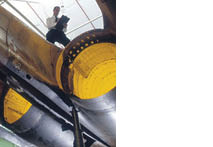
Australia is a world leader in mechanical and component fatigue testing which studies unexpected fractures of mechanical components in service due to repeated or vibrational loadings.
Aircraft fatigue problems manifest in many ways— in primary and secondary structures, landing gear, engines and propellers, control systems, and various fittings. It is a universal problem and from the 1940s Australia conducted tests on numerous aircraft, including the American P51-D Mustang fighters, as well as civilian planes.
During World War 2, the Division of Aeronautics of the Council for Scientific and Industrial Research (later the Aeronautical Research Laboratories – ARL) worked with the RAAF and the local aircraft industry on operational, design and manufacturing problems.
A crash of an RAAF Bristol Beaufort bomber in July 1945 with the loss of the two crew members, was the first documented fatal crash of a RAAF aircraft because of fatigue failure and prompted increasing concentrated research on fatigue problems.
From 1950, over 12 years, 222 Mustang aircraft wings were tested under repeated loads and a complex series of loads representing the load history of an aircraft in service. This program was the most extensive series of fatigue tests of a full-scale structure ever undertaken, and the 1960s saw Australia become the world leader in aircraft fatigue research.
Australia’s defence scientists have established an enviable reputation as world leaders in fatigue-testing work on defence platforms.
DSTG has continued to undertake testing of aircraft and helicopter airframes and components with other countries, such as Canada, to establish economic safe life timeframes and to extend the service life of aircraft.
In 2002, DSTG and its Canadian partners received the prestigious Von Karman Award for Collaboration for their work to determine how long the F/A-18 Hornet airframe could operate safely before retirement. The project was regarded as the most advanced full-scale fatigue test in the world.
Along the way, many new test techniques were pioneered and an invaluable set of operational data was collected to support the aircraft for RAAF service. In 2008, DSTG’s full-scale fatigue testing of ex-service F/A-18 Hornet centre barrels added two years of service life to the aircraft and saved Defence around $400M in replacement costs.
The full-scale structural test of the F/A-18 A/B Hornet has been recognised as an outstanding example of international cooperation in the field of aeronautics.
Fatigue research has led Defence into new areas of repairing and maintaining Air Power assets. As we move into the next stage of technological advancements, DSTG is investigating new methods of repairing aircraft and ships, using bonded and different composite element joinings.
Along with research and supporting platforms, Australia’s Air Power is maintained through its aircraft.
F-35A Lightning II
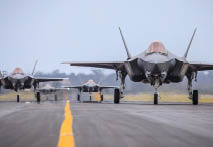
The F-35A Lightning II is the Australian Defence Force’s first fifth-generation air combat capability. It is a highly advanced multi-role, supersonic, stealth fighter which will meet Australia’s requirements to defeat current and emerging threats.
The F-35A is at the forefront of air combat technology. Its advanced sensors and data fusion will allow it to gather more information and share it with other Air Force aircraft, Navy ships and Army units quicker than ever before. This will greatly enhance the Australian Defence Force’s situational awareness and combat effectiveness. In addition to its greatly enhanced situational awareness, the F-35A provides its pilots with significantly higher levels of lethality and survivability in combat.
Australia has committed to 72 F-35A aircraft for three operational squadrons at RAAF Base Williamtown and RAAF Base Tindal, and a training squadron at RAAF Base Williamtown. To date, 44 have arrived. All 72 aircraft are expected to be fully operational by 2023.
The F-35A has extraordinary acceleration, agility and 9G manoeuvrability. It is capable of supersonic flight while retaining stealth and has the ability to employ a wide range of air-to-surface and air-to-air weapons.
EA-18G Growler

The EA-18G Growler is an electronic attack aircraft. It is capable of disrupting, deceiving and denying a broad range of military electronic systems, including radars and communications.
Growlers help to reduce the risk to our forces and improve their situational awareness. It can support a wide range of Defence tasks, from peacetime evacuations to major conflicts.
E-7A Wedgetail
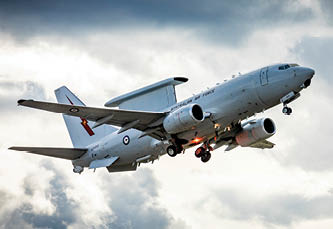
The E-7A Wedgetail provides Australia with one of the most advanced airspace battle management capabilities in the world.
With its ability to command and control large areas of airspace, the Wedgetail’s ability to coordinate a joint air, sea and land battle in real time significantly increases the effectiveness of the ADF.
The E-7A Wedgetail is a force multiplier with its long range surveillance and communications capabilities. The aircraft has participated in operations both domestically and internationally since its introduction into RAAF service and regularly supports single service, joint and allied exercise training activities.
During a standard mission, the E-7A Wedgetail can cover more than four million square kilometres, an area the size of Western Australia or the Northern Territory; and is capable of extensive long-range deployment with in-flight refuelling – making it highly effective in the endurance stakes.
The future – MQ-28 Ghost Bat uncrewed aerial vehicle (UAV)
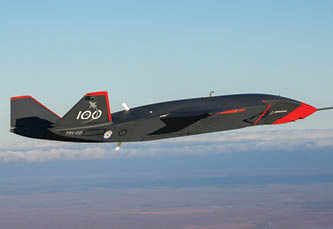
Australia’s Air Power prowess has taken a gigantic leap ahead with its uncrewed aerial vehicle “Ghost Bat” – a very successful collaboration between Boeing, RAAF and DSTG.
Taking just three years from concept to its first flight, and with contribution from 35 Australian companies, the aircraft is the first military combat aircraft to be wholly designed, engineered and manufactured in Australia in more than 50 years.
Developed under the $150 million Loyal Wingman project, the Ghost Bat had its maiden flight in March 2021 and was displayed at the Dubai Airshow in November. Future aircraft will be produced in Toowoomba, Queensland.
Ghost Bat is a subsonic aircraft with a range of more than 2,000 kilometres. It consolidates advanced materials, smart sensing and artificial intelligence and will be used to protect and sustain Australia’s most valuable combat aircraft and aircrew, including the F-35, Super Hornet, and Growler. The autonomous aircraft will also assist the Australian Defence Force in increasing its agility and capability.
Ghost Bat will be equipped with sensor packages that will enable it to conduct intelligence, surveillance, and reconnaissance (ISR) missions.
Ghost Bat demonstrates that as with the past, Australia’s future Air Power will continue to be an integration of joint efforts from RAAF, DSTG, academia and Defence industry organisations. Only by combining the varied knowledge, experience and expertise from diverse areas, will Australia maintain its security and defence superiority.
Artificial intelligence, enhanced computational power, smart sensing and advanced manufacturing, cyber warfare abilities, hypersonic flight and a leap into space, will characterise Australia’s future Air Power.
New technology research in radars, electro-optical sensors, electronic intelligence, the internet of things, imagery and information distribution in real time are already revolutionising the Defence environment.
Australia’s Air Power defence superiority will integrate air, sea, space and cyberspace platforms in joint operations with its allies. However, Air Power will also have a mitigating effect in peace times, as a deterrent.
To capture the current research and future capability development momentum in Australia, Defence is holding the inaugural Australian Defence Science, Technology and Research Summit (ADSTAR) to be held in Sydney from 20 to 22 July 2022.
Inaugural Australian Defence Science, Technology and Research Summit
Hosted by Defence Science and Technology Group the summit will bring people together from across the research and innovation sector. Participants will share ideas to enhance the capability for the Australian Defence Force, including Air Power.
The conference will focus on three main themes:
- Resilience in contested environments;
- Artificial Intelligence for Defence; and
- Human & defensive biotechnologies.
These themes continue to form an integrated approach to warfare across Navy, Army and Air Force.
The RAAF’s core air power roles, including control of the sky, strike, ISR, command and control, and force protection are as relevant today as they have been for the past 100 years.
Defence images.









